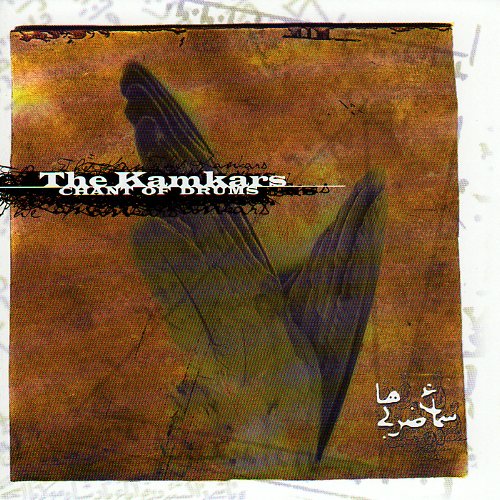 |
 |

|
Catalog no. QuarterTone Productions QTCD-1004   Credits: Performance by The Kamkars Daf by Bijan Kamkar Do-table by Pashang Kamkar Tombak, Zarbe-Zoorkhane by Arzhang Kamkar Barbat, Violin, Viola by Arsalan Kamkar Dohol, Damam, Viola by Ardeshir Kamkar Santur by Ardavan Kamkar Tas by Hooshang Kamkar Recording Engineer: Iraj Fahimi Recorded at Bell Studio, Spring 1999 Cover Design by Houman Mortazavi  Purchase This Album: From From  Overview: The form of call and response between groups of instruments and solo instruments, and the utilization of pitched instruments solely for maintaining the rhythm on the two notes F and C are among the unique features of this work. In certain cases, as a reminder of a particular spiritual space or mood, the melodic nature of the instruments has been used in light motifs. Using techniques of counterpoint and orchestration, Chant of Drums is composed for percussion instruments and spiritual melodies without lyrics. The unintelligible voices, which are often unconsciously uttered by the dervishes at climactic points during spiritual gatherings, have been used for rhythmic emphasis as well as further stressing the states of trance. This composition is comprised of seven parts. It has an episodic form, and at the same time the repetition of a variance of the first part at the end of the seventh, renders it a cyclical form.  |
|
|
Copyright © 1995-2021 Kereshmeh Records. -- All Rights Reserved.
|
||